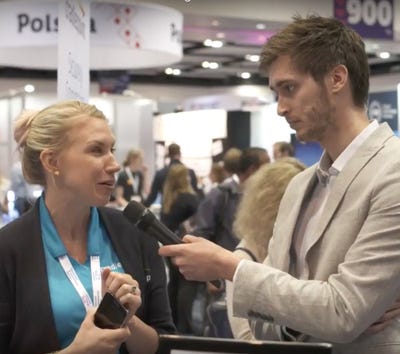DNV GL on ‘Pilot Purgatory’ and Successful Industrial IoTDNV GL on ‘Pilot Purgatory’ and Successful Industrial IoT
Ahead of speaking on a free-to-attend keynote panel session at IoT World Europe in London tomorrow, DNV GL’s digital solutions CEO talks “pilot purgatory” and digitizing industries.
June 11, 2018

As a specialist in digital solutions for maritime, energy and oil and gas, DNV GL is no stranger to the industrial Internet of Things. It sees IoT as a means for “safeguarding life, property and the environment” and to “enable health care providers, food industry and smart cities to advance the safety, sustainability and efficiency of their operations.”
Elisabeth Tørstad is DNV GL’s chief executive officer of digital solutions, leading roughly 1,000 digital industry experts in their delivery of smart, data-based solutions used by DNV GL’s clients. Tomorrow she’s part of a free-to-attend keynote panel session at Internet of Things World Europe alongside Airbus, Gartner and CNH Industrial – part of TechXLR8, the overarching technology event and one of London’s biggest.
Before taking the stage at this 15,000-attendee festival of tech, Tørstad was happy to share her vision and elaborate on the recommendations she plans to make when she speaks.
Q: You’re speaking at IoT World Europe on “Co-Innovating, Co-Developing and Collaborating to Deliver the IoT Ecosystem.” What points will you cover, and what recommendations will you make to your audience?
I am really looking forward to tomorrow’s panel session. One of the key points I will touch upon is the importance of a focus on innovation and on continuous learning, both through internal efforts in individual organization, but also through working closely with customers and stakeholders. I will also talk about the importance of building long-term relationships, how IT departments become more externally focused and some of the challenges in a “brownfield” world.
Q: How is IoT changing the work you do at DNV GL right now?
IoT is changing the landscape in all our key industries; where energy and goods are produced and transported around the world. When everything is connecting we are increasingly relying on data in our decision-making. Data is becoming the raw material of our century, and critical infrastructure and logistics chains are producing a lot of data.
However, in order to provide value, the whole value chain of data must be managed in a way that allows one to trust the outcomes of algorithms. At DNV GL we have always been entrusted with data by our customers in the analog world, and we are now bringing this trust position into the digital world. We are strengthening our service offering within data driven modelling, data quality and cybersecurity. To facilitate frictionless connections between different industry players, domain experts and data scientists, DNV GL has built an open and secure platform – Veracity – facilitating exchange of datasets, APIs, applications and insights.
Q: Many industrial companies are concerned they won’t achieve ROI from their IoT projects. What’s your favorite case study that exemplifies how IoT has generates ROI in your industry?
A good example is the work that DNV GL does in our Green Power Monitor operation for the renewable energy sector, where we use data harvested from solar plants to provide insight and give advice to operators. We provide a full end to end solution for managing solar plants, enhancing reliability and efficiency for solar generation today.
Q: Many industrial companies have encountered “pilot purgatory” where their IoT projects never get off the ground. Why do you think so many companies are falling foul of this, and how do we get past this problem as an industry?
Let me share some insights that we have gained from our extensive experience in DNV GL. We’ve started to see real value creation from IoT, but we also see that the potential is far from exhausted. Industrial data currently exists in many different siloes and formats, often for use in local monitoring, control or operational processes. Extracting new insights from data across all these siloes is often a challenge.
Data coming from disparate systems often lack the necessary context, such as metadata, time and space and environmental conditions, for it to be combined and used for wider-reaching analysis. As we develop stronger, common frameworks for data management, I think we will start to see value and investments accelerating rapidly.
Q: Why have you chosen IoT World Europe as the place to share your IoT message?
IoT World Europe is a great place to get updated on the latest developments in IoT, and to extend my network. I am looking forward to some interesting days with good discussions!
[IoT World Europe in London is where industrial enterprises learn to put IoT to work and reap the commercial benefits. Get your tickets and free visitor tickets now.]
About the Author
You May Also Like







